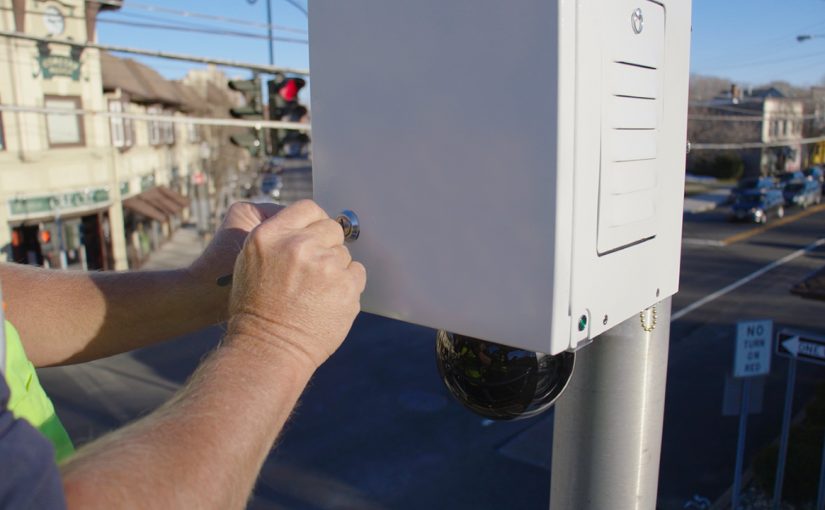Cities of all sizes have specific security challenges. There are several organizational and technological tools that can help law enforcement maximize their efforts in securing their cities. Citywide surveillance is one such technology. By providing better situational awareness, video surveillance helps law enforcement officers enhance monitoring, verify situations, promptly identify threats, and improve response time.
Benefits of Citywide Surveillance
The most direct benefit of citywide safety solutions is lower crime rates in the area where the cameras are installed. These cameras not only have the immediate effect of deterring crimes, but also, as cases begin to be solved and criminals realize they will likely be caught, potential offenders typically commit fewer crimes.
When crime rates decrease, quality of life increases for community members. Safe environments and quality education offerings, along with safer parks and recreation areas, tend to attract more families. Low crime statistics and good quality of life attract top professional talent to local employers. Low crime rates increase residents’ confidence and productivity, and consumer spending and growing local businesses create economic development. All of these positive outcomes lead to cities growing and prospering.
Towns of All Sizes Benefit from Citywide Surveillance
Cities, towns, and municipalities of all sizes can greatly benefit from citywide safety solutions when the correct scalable solutions are implemented. It is sometimes overlooked how much small cities and large cities have in common. They both have hot spots, public events, and safety goals. They both have budgets, and neither one has unlimited funding. They both have crime and measure crime rates the amount of crime per population. Both small and large cities typically install citywide safety solutions in phases.
System Coverage Matters
Most cities are set up in a way that their surveillance systems’ value comes into play after an incident occurs. Therefore, the most successful citywide safety solutions blanket key areas of a city with camera coverage. This coverage is important because it allows the police department to follow an entire incident. They can then gather the data from the entire incident and extract the pertinent information. They can also understand the facts—who the potential witnesses are, where the suspects fled, what they looked like, and what they were wearing. The exception to this post-incident-only value is if a city has tied license plate readers (LPRs) into their surveillance solution, which are very effective in real-time monitoring and alarming and can be utilized for Be on the Look Out (BOLOs) to stolen vehicles, missing persons, Amber Alerts, and post-event investigations.
Three Major Components of Citywide Surveillance
Citywide surveillance technology includes three major components: video data collection at the street level, video transmission network, and video management software and servers.
1. Video data collection at the street level—There is a saying in the industry: “garbage in, garbage out,” which means that a city must have high-quality, reliable video surveillance solutions and peripheral equipment collecting video data if administrators want to be able to view quality video and properly analyze it.
2. Video transmission network—This network can be wired or wireless, but it must be designed and set up properly by an experienced company. Cameras are easy to mount and connect, but knowing how to design a wireless network and which components to use to ensure its most efficient and uninterrupted operation takes an experienced integrator of wireless solutions.
3. Video management software solution and servers—When quality video is successfully transmitted back to a real-time crime center or monitoring location, a leading video management system software platform with video synopsis capabilities will allow administrators to quickly and effectively search the video and obtain the data that they need. There are some video management systems that have components and features just for cities and police departments.
Choosing the right citywide surveillance solution, as well as setting up and scaling a city video network involves a lot of technology and infrastructure decisions that requires an experienced and knowledgeable integrator.



